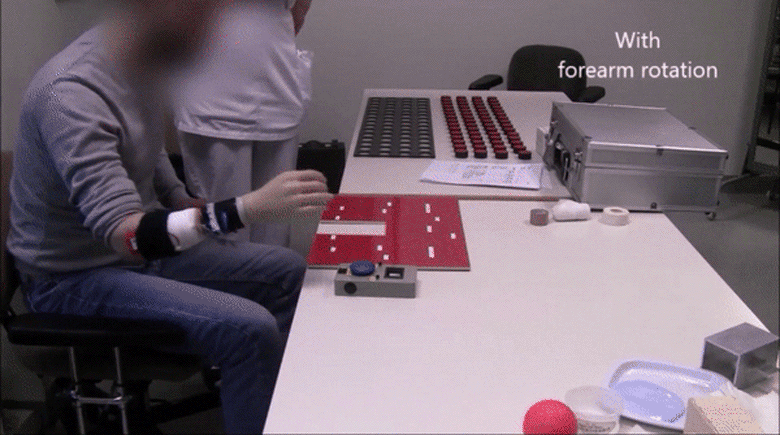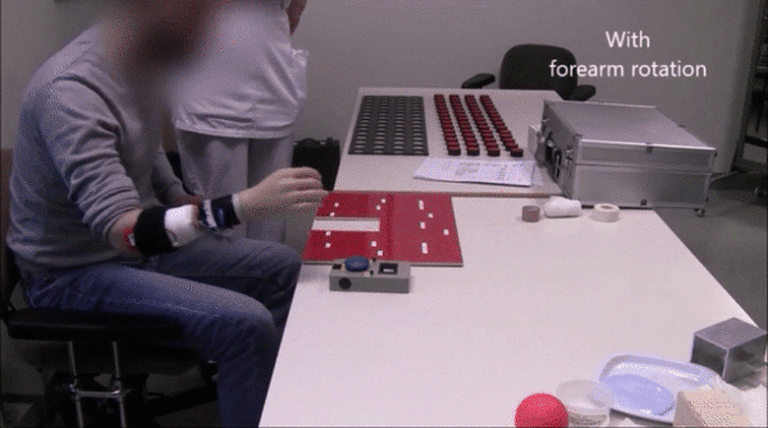
Osseointegrated transradial prostheses have the potential to preserve the natural range of wrist rotation, which improves the performance of activities of daily living and reduces compensatory movements that potentially lead to secondary health problems over time. This is possible by enabling the radius and the ulna bone to move with respect to each other, restoring the functionality of the original distal-radioulnar joint. In this paper we report on psychophysics tests performed on an osseointegrated transradial amputee with the aim to understand the extent of mobility of the implants that is required to preserve natural forearm rotation. Based on these experiments, we designed and developed an attachment device between the implants and the hand prosthesis that serves as an artificial distal radio-ulnar joint. This device was fitted on an osseointegrated transradial amputee and its functionality assessed by means of the Southampton Hand Assessment Procedure (SHAP) and the Minnesota Manual Dexterity test (MMDT). We found that axial rotation of the implants is required to preserve forearm rotation, to distribute loads equally over the two implants (60% radius – 40% ulna), and to enable loading of the implants without unpleasant feelings for the patient. Higher function was recorded when our attachment device enabled forearm rotation: SHAP from 61 to 71, MMDT from 258s to 231s. Natural forearm rotation can be successfully restored in transradial amputees by using osseointegration and our novel mechanical attachment to the hand prosthesis.

